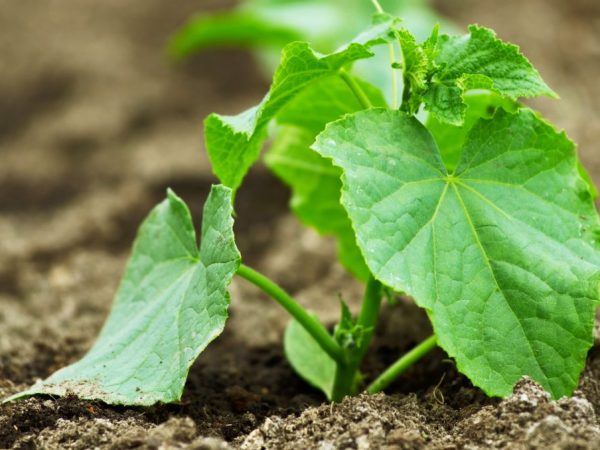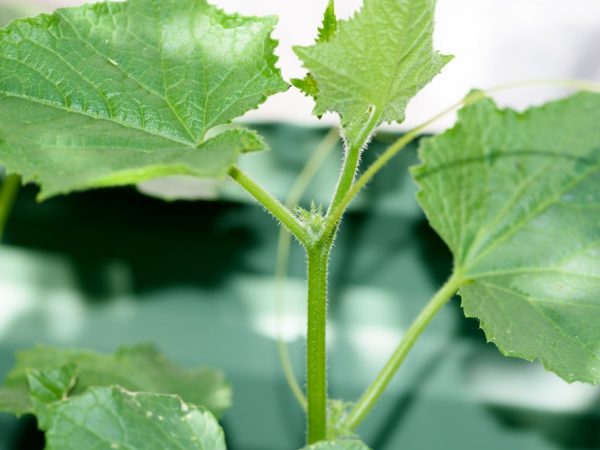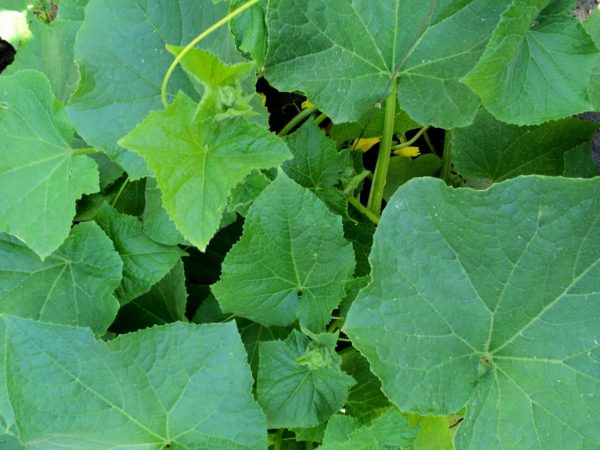Growing and planting cucumbers according to the advice of O. Ganichkina
Oktyabrina Ganichkina is a candidate of agricultural sciences, a well-known radio and TV presenter, author of books on gardening, an active participant in regional agricultural exhibitions. Ganichkina's advice on planting and growing cucumbers will allow every gardener to improve the quality of fruits and crop yields.

Growing cucumbers according to the advice of O. Ganichkina
Seedless method
Cucumber seeds need to be sown in the garden in the last decade of May - early June (depending on the variety). The ideal option would be a light neutral or slightly acidic soil, with a high humus content and good illumination.
For growing cucumbers, it is better to use the beds after tomatoes, onions, legumes, early varieties of potatoes and white cabbage. The worst predecessors are cucumbers, squash and other pumpkin seeds.
Training
The preparation of the beds must be started in the fall, carrying out preventive treatment with a 1% solution of copper sulfate or Bordeaux liquid. After spraying, it is required to burn all plant residues and dig up the bed.
In the spring, the site is again dug deeply and fertilized:
- organic fertilizing (maximum dose 5kg / m2);
- "Agricola for pumpkin crops" (one package for 3.5-4m2).
Level the soil with a rake and press with plywood or board, leaving the width of the beds to a maximum of 65-70cm.
Along the resulting beds, it is necessary to draw a furrow with a lath (2-3 cm). Before planting, on the advice of Ganichkina, it is better to water the grooves abundantly twice with a hot solution of a biostimulant for better growth and tying of greens.
Sowing
Sowing is carried out in warm and moist soil. The seeds do not require preliminary soaking, the distance between them is 50-55cm. To scare away pests (ants, slugs, mice, etc.), sprinkle the beds with a mixture of ground peppers (black and red), and the row spacing with dry mustard.
The sown bed must be covered with non-woven material until mid-June to protect the sprouts from low temperatures.
Since the second half of June, arcs (1 m in height) have been used as a shelter, on which dense white material is located. He must cover crops from all sides, protecting from the sun.
If the cucumber variety is self-pollinated, the shelter is not removed until September (except for the time of feeding and moisturizing). If the culture requires pollination by insects, during flowering, the edge of the shelter is raised from the windless side.
Care

Provide your plants with proper care
Cucumber is a thermophilic culture, the temperature of 25-27 ° is optimal for its normal development. With a decrease to 12 °, the plant stops growing and the formation of ovaries.
Before the start of fruit formation, crop care is divided into:
- Thinning of seedlings. When sowing, the percentage of seed germination is taken into account, so the seed is placed a little closer to each other than is necessary for full growth.After the appearance of the second true leaf, the plants are thinned out (up to 3 times).
- Weeding. Carefully weeding will help prevent the growth of weeds, the spread of diseases and pests.
- Watering. Watering cucumbers (except for the base of the stems) is necessary every 3-4 days with a large amount of warm water at the rate of 2-3 liters per bush.
- Loosening. Performed to establish optimal aeration and soil moisture capacity. The last stage of loosening occurs when 4-5 true leaves are formed, when the plants are still vertically directed.
After the onset of flowering, and especially during the period of fruit formation, care should be concentrated on the following points:
- Watering. The amount of water must be increased to 3-4 liters per plant.
- Fertilization. Top dressing is applied once a week in the form of ready-made organic and mineral fertilizers. Spray the bushes every 2-3 weeks, alternating liquid fertilizers and growth stimulants.
- The formation of the whip. The tops are pinched when the length of the lashes is at least a meter, the length of the lateral shoots is 45-50 cm.
Seedling method
Growing seedlings in a greenhouse is the best way to get an early harvest of cucumbers. Indoor ground will be more gentle for delicate sprouts and will protect against negative environmental factors until the moment of transplanting to the garden, when the plants get stronger.
The optimal composition of the soil for growing cucumber seedlings in greenhouse conditions will be a combination of loam, humus and peat.
Training
Preparation for sowing cucumbers in greenhouses:
- cleaning plant residues;
- greenhouse disinfection;
- application of fertilizers and stimulants.
Disinfection of the greenhouse is carried out to protect against pathogens of fungal and viral infections; it is necessary to process not only the soil, but also all surfaces of the room, tools and materials. For disinfection Ganichkina recommends using a solution of copper sulfate, karbofos and tar soap or special preparations ("Iskra DE", "Hom").
Ash, superphosphate and special stimulants for pumpkin crops are used to enrich the soil.
Sowing and care in the greenhouse
Sowing time: by the time of planting in open ground, the age of the seedlings should be 20-25 days. The optimum temperature is 20-22 ° during the day and 13-15 ° at night.
Growing care in greenhouses:
- watering: 2.5-3l / m2);
- top dressing (at the stage of appearance of 2 true leaves, watering with Agricola Forward or a similar fertilizer, at the stage of 3-4 leaves - top dressing with complex mineral fertilizer);
- treatment with a growth stimulant of the root system (7-10 days after sowing).
Landing

Plants need fertilization
Transplanting of seedlings occurs after the formation of 5-6 true leaves., Plant the bushes with an interval of at least 50 cm, pulling the wire for the trellis between the rows. Pieces of thick rope must be attached to the wire so that it is possible to tie up the plants. The garter is made at the stage of forming 8-9 sheets, when the lashes are in a horizontal position.
According to the Ganichkina method, the agricultural technology for growing cucumbers from seedlings in the garden combines the following points:
- plant formation;
- watering;
- fertilization.
Lash formation
Removing unnecessary shoots plays an important role in crop development, preventing light deficiency and making harvesting easier.
To thin out thickened landings, each separate lash is formed according to the scheme:
- At the level of 3-4 lower leaves, it is necessary to remove all germinating shoots and buds. Zelentsy, formed at the beginning of the lash, suspend its growth and productivity.
- Remove all lateral shoots up to 1.5 m from the soil, leaving only fruit ovaries from 4 leaves and above.
- From 0.5-1 m above the soil surface, they form with partial preservation of a lateral shoot with one leaf and ovaries.
- Up to a height of 1.5 m - leave all fruit ovaries, pinching the lateral shoots above the second leaf.
- Above 1.5 m, pinching is done over the third leaf, keeping the lateral shoots.
- The stalk that has grown over the trellis must be fixed around the wire. I pinch its top when it reaches 50-60cm.
- Simultaneously with the formation process, it is necessary to remove yellowed, weakened and diseased leaves.
Outdoor care
The amount of water required for a culture depends on the stage of development:
- only planted seedlings - 3 l / m2;
- budding and beginning of flowering - 5.5-6 l / m2;
- mass flowering - 9-10 l / m2;
- ovary formation and fruiting - 12-18 l / m2.
The amount and composition of fertilizers applied also depends on the vegetative maturity of the cucumber:
Prior to budding, watering with Agricola Forward is applied (at the rate of 2 tablespoons per bucket of water);
At the stage of mass flowering, plants are fed with complex fertilizers with an increased content of nitrogen, phosphorus and potassium;
At the stage of formation of Zelentsov, the TV presenter recommends the use of Agricola Vegeta fertilizer (1 tablespoon for 5 liters of water).
On average, for a complete top dressing, it is necessary to add 5 liters of fertilizer dissolved in water per m2. The introduction of dressings is of particular importance during the formation and ripening of fruits, therefore, fertilizers at the fruiting stage are introduced once a week.
Disease prevention
Fight against diseases by increasing immunity and culture resistance. A strong and healthy plant is less likely to suffer from diseases. It is also important to harden the seedlings in the seedling growing method. This forms the ability of cucumbers to resist disease.
When the first signs of a disease appear on one of the plants, you need to remove it from the garden or greenhouse. The pathogen quickly spreads to all plantings, especially in conditions of thickening of the plants.
Conclusion
By making the formation of lashes and saturating the soil with the necessary nutrients and water, it is possible to significantly increase the setting of plants and the quality of the formed fruits.
Oktyabrina Ganichkina divides the cultivation of cucumbers into two methods (seedling and seedling), paying special attention to pinching the lashes and processing the plantings with growth stimulants and liquid fertilizers. Tips will help even an inexperienced gardener get the full benefit of the cucumbers planted in the form of a bountiful harvest.


